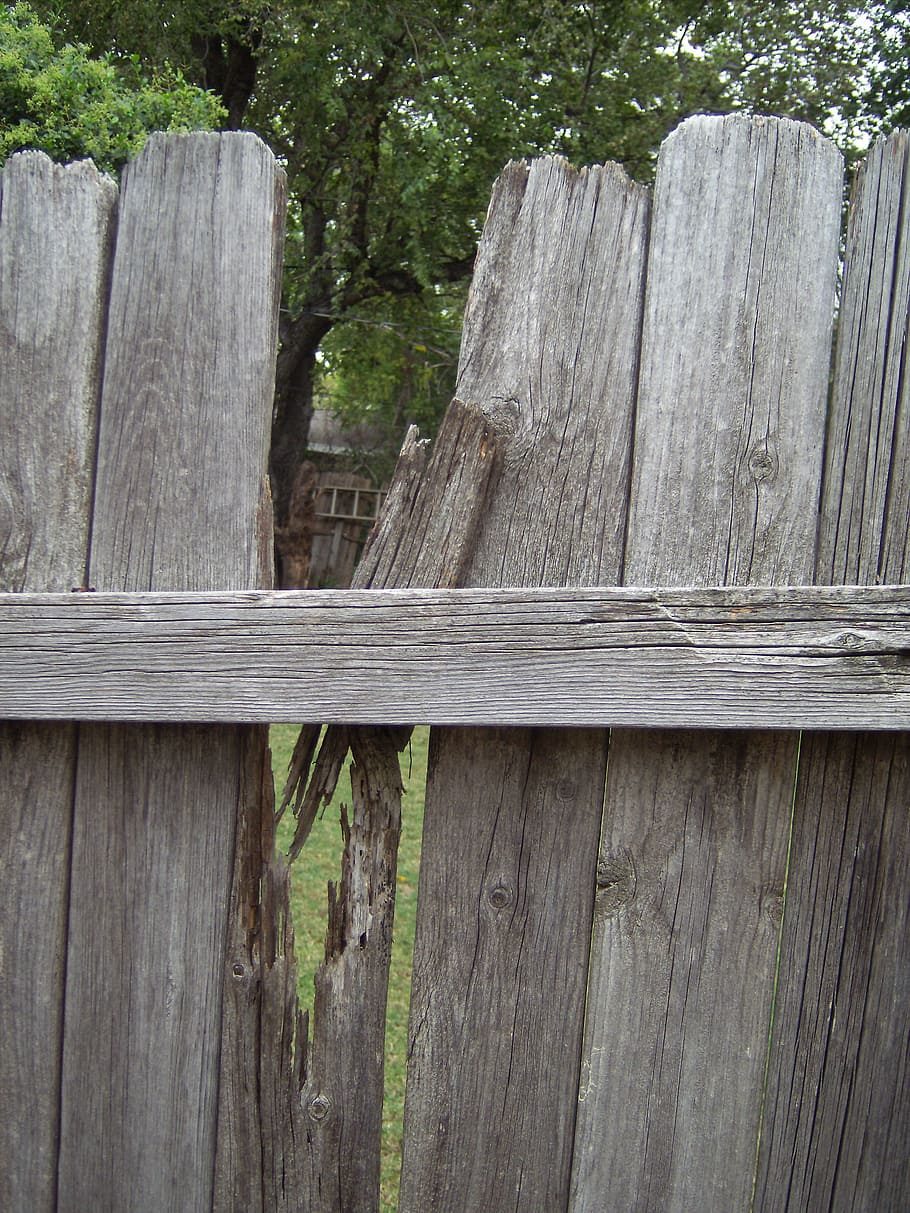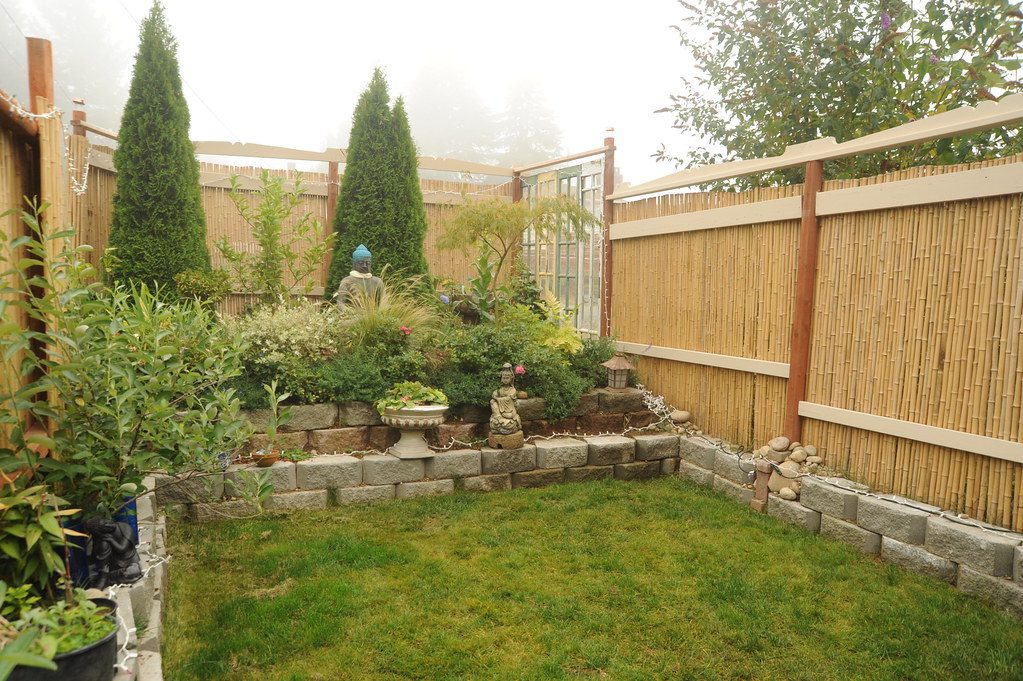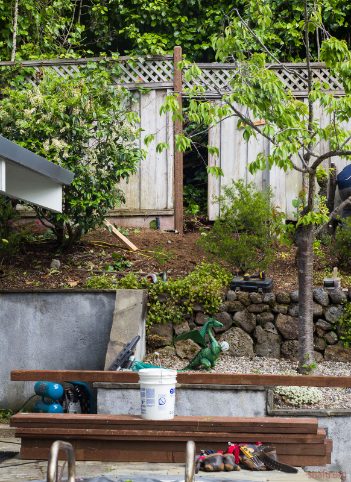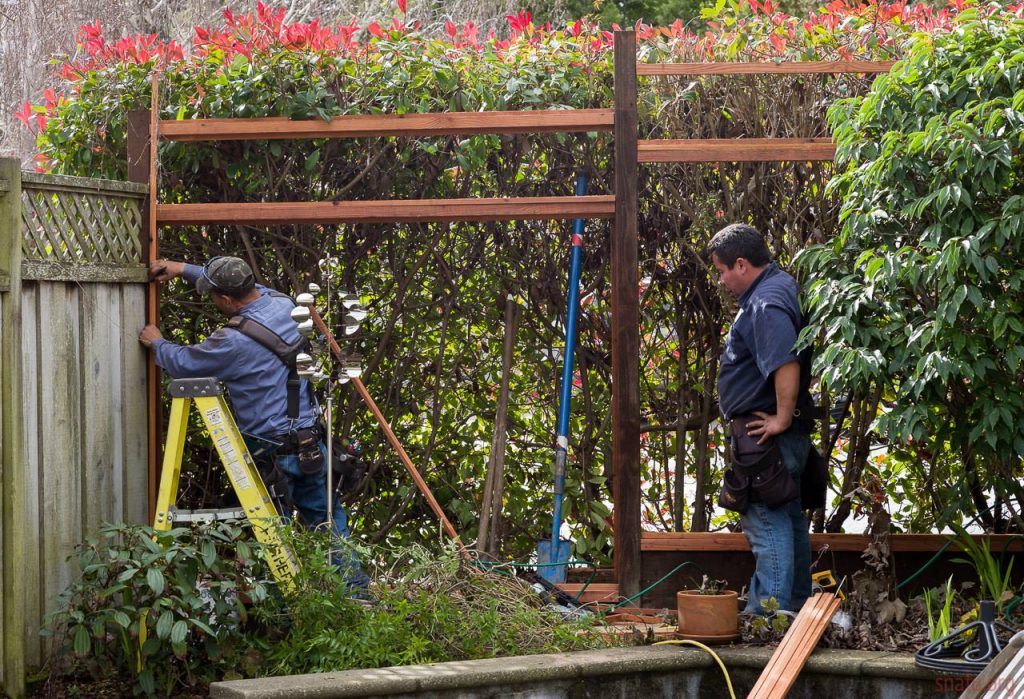Jump to:
‘Your garden fence posts serve many purposes, from privacy and security to decoration. But they can become damaged due to weather, wear and tear, or other factors in time. It’s important to stay on top of fence repair and maintenance to ensure that it continues to be of use effectively.
Delaying it is a bad idea, and we’ll explain why. This post will also cover safety concerns, legal issues, solutions, and more. It aims to help you understand why this is serious. You’ll also have some practical tips and resources to get started.
Safety Concerns

Damaged garden fences can pose several safety hazards. For one, the risk of someone getting hurt or unauthorised access to your property. Here are some specific examples to illustrate these points:
Injury risk
If your fence is busted, it may be less stable and more likely to collapse or fall over. This can pose a serious risk of injury to anyone who comes into contact with it.
For instance, have young children or pets, or the kids cycling in the neighbourhood. They may be tempted to climb on or play near the fence, and this could result in an accident.
Security risk
Homes with a fence are less likely to be burglarised than those without. Maintaining a strong and secure fence is key to deterring intruders. But suppose there are holes or gaps in it. Someone could easily slip through and enter your home undetected!
Damage to Property
Broken fence posts may no longer protect your garden from wildlife effectively. For instance, if you have a vegetable garden, rabbits, deer, or other animals may be able to get in and eat your crops.
Similarly, if you have a flower garden, dogs or other pets may be able to get in and dig up your plants. In extreme cases, damage to your garden can be costly and time-consuming.
Another possible scenario is that pets may be able to escape from your yard. They could potentially get hit by a car or injured in some other way.
A wobbly post can also lead to damage to your garden furniture. Say, your fence is leaning or unstable; it may fall over and damage your patio sets, BBQ, or other outdoor items.
Legal Issues

Depending on where you live, there may be local regulations governing fence maintenance. Should your fence be in violation of these codes, you may be fined.
What’s more, ensure that your entire fence is located on your own property, not on your neighbour’s. If the other party has placed theirs close to your boundary lines, you may complain – vice versa.
Note: Disputes with neighbours over garden fences are not uncommon in the UK. Try to resolve any disputes in a peaceful and amicable way. But if this isn’t possible, it may be necessary to seek legal advice or mediation.
Read our “How Close Can Your Shed Be to a Fence?” to learn more.
Financial Implications

Delaying fence repair can lead to a more expensive fix or even a complete replacement. This is because a small issue can easily turn into a larger one when left unaddressed.
Take rotting wood, for instance. Wooden fences are vulnerable to rotting, especially in areas with high moisture levels. Postponing treatment can lead to spreading from a small section to the entire fence. This can result in the need for a complete replacement, which can be costly.
The same goes for rusting metal fences. Rust spots can continue to spread and make the repair more difficult and expensive.
By investing in timely repairs, you can save money in the long run and avoid the need for a new fence installation.
DIY Solutions

Repairing a fence yourself can be a cost-effective solution. But when doing so, take the necessary precautions to ensure the safety and integrity of the fence. Here are some tips and resources to consider to get you started:
1. Safety first
Before starting any repairs, wear appropriate safety gear, such as:
- gloves
- eye protection
- sturdy footwear
If you’re working with power tools, take extra care when using them. Also, be aware of any potential hazards, such as sharp edges or unstable surfaces.
2. Assess the damage
Before starting any repairs, assess the extent of the damage to your boundary fence. Then, determine what materials and tools you’ll need to complete the job.
See if the damage is extensive or involves major structural elements. If so, it may be best to consult a professional to ensure the repair is done safely and correctly.
3. Gather the necessary materials
Once you’ve assessed the damage, make a list of the materials and tools you’ll need to complete the repair. This may include replacement boards, screws or nails, a saw, a hammer, and a level. Invest in high-quality materials that are appropriate for your fence type and climate.
4. Follow a tutorial or guide
If you’re new to this, it can be helpful to follow a tutorial or guide. There are many online resources available, such as YouTube videos and DIY blogs. Most provide step-by-step instructions for various types of fence repairs.
5. Know your limits
Know your limits, and don’t take on a repair beyond your skill level or equipment. If you’re unsure about the repair or don’t have the necessary tools, it’s best to consult an expert.
When to Call a Professional

Here are some signs that it’s time to hire a professional:
- Extensive damage. If the damage to your fence is extensive, such as large holes, broken posts, or major structural issues.
- Lack of time or expertise. If you don’t have the time or expertise to complete the repair yourself.
- Safety concerns. If the repair involves working at heights or with power tools, it may be safer to hire a professional who has it all.
When hiring a professional, find a reputable contractor. Examples of a good fence repair service may include the following:
- contractors who completed the job quickly and efficiently,
- provided clear communication throughout the repair process,
- offered warranties on their work.
These are some certain situations where it’s best to call in a skilled repairman.
Round-up
Delaying garden fence repair is a bad idea. It can put your safety at risk, lead to property damage, and result in legal or financial consequences.
Invest in timely repairs to protect your property and avoid costly repairs down the line. So, if you’re experiencing any issues with your garden fence, take action and repair it as soon as possible.





